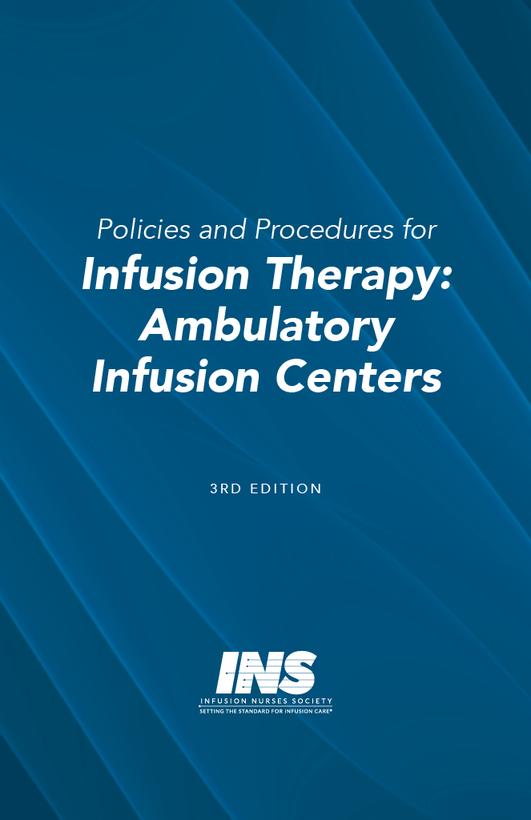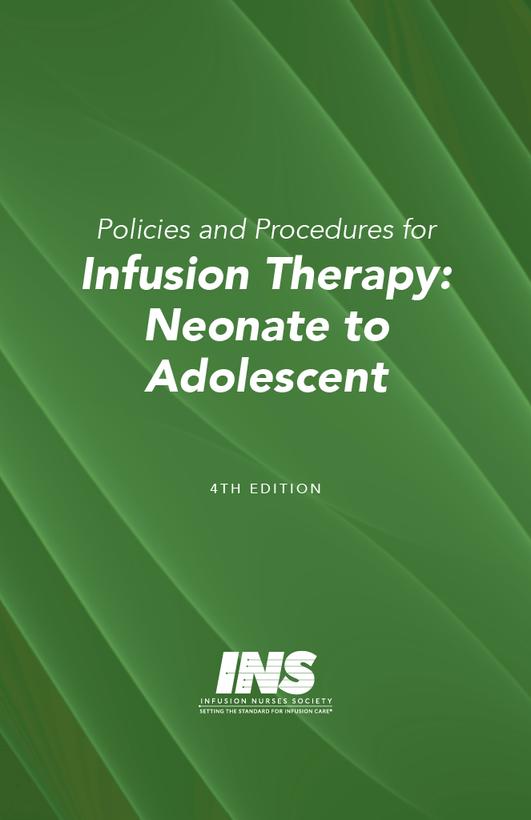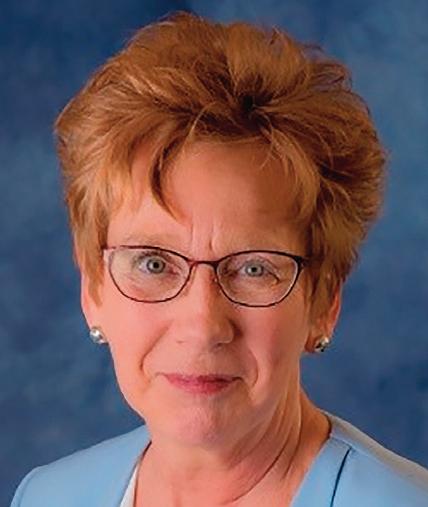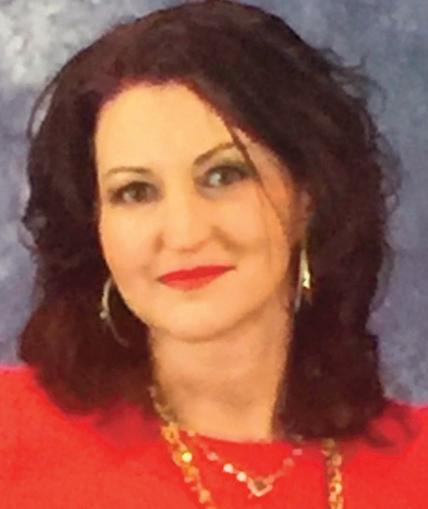Implementing a Mobile Blood Transfusion Service
 By Don E. Adams III, MD, Bert J. Smith, MD, FACP, and Christy M. Smith, PhD, MSN, RN
By Don E. Adams III, MD, Bert J. Smith, MD, FACP, and Christy M. Smith, PhD, MSN, RN
Introduction
Mr. Anderson is a 70-year-old male recovering from a hip replacement and undergoing rehabilitation in a skilled nursing facility (SNF). He is told that his hemoglobin is 6.5 g/dl and he needs to have a blood transfusion. The local outpatient infusion center is unable to schedule him for several days, so he will need to go to the hospital emergency department to have this treatment. Mr. Anderson knows this means a painful ambulance ride and he questions why he must leave what he considers a “hospital-like” setting to receive the transfusion. The SNF nurse tells him that “they do not do those here.” At best, Mr. Anderson will miss his therapy for the day, his routine medications, and perhaps a meal. However, he is also fearful of getting readmitted to the hospital during this treatment.
Skilled nursing patients are typically admitted to a facility on a short-term basis for rehabilitation services of some sort following a fall, accident, or surgery. For 2023, Medicare Part A fully covers 20 skilled therapy days for SNF patients after patients meet their deductible for the benefit period. For days 21-100, patients must pay $200 daily for their services. After day 100, patients are responsible for the full cost of their treatment.1 This means each therapy day is valuable for the patient and the goal should be to discharge patients as quickly as safely possible from skilled units.
Anemia in the older adult is an often undiagnosed condition associated with increased falls, confusion, dementia, hospitalizations, and mortality. The exact prevalence of anemia in the SNF patient is unknown. A 2021 review published in the Journal of the American Geriatrics Society suggested that up to 15% of people 60 and above have a diagnosis of anemia.2 Other research data, though, estimates the prevalence to range anywhere from 34-60%.3,4 The rate of anemia increases with age as well due to nutrient deficiencies, chronic diseases (especially kidney disease), and malignancies.
Anemia is defined as a hemoglobin of less than 13 g/dl in men and 12 g/dl in women; more recent data states that in postmenopausal women, the threshold for diagnosis should be 13 g/dl.2 Anemia is treated in a variety of ways, including

5 INSider COVER STORY
iron supplementation, iron infusion, erythropoietin stimulating agents (ESAs), and red blood cell transfusion. Iron supplementation and ESAs can take several weeks to effectively raise hemoglobin. Red blood cell transfusion has an immediate effect of raising hemoglobin an average of 1 g/dl per unit transfused.5
Moderate-severe anemia is most commonly treated via transfusion of red blood cells.6,7 Historically, patients who resided in SNFs requiring transfusions were transported via ambulance to either an outpatient infusion center or an emergency department to receive this care, resulting in disrupted care, increased exposure to nosocomial infections, increased hospital readmission for the patient, and lost revenue and increased health care costs for the SNF.
There are four common reasons why SNF patients need a red blood cell transfusion during their stay. Many times, postoperative patients experience some blood loss during surgery and level out at a lower than normal hemoglobin. A transfusion helps these patients have an immediate increase in hemoglobin levels. For example, Mr. Anderson’s decreased hemoglobin level puts him at an increased risk for dizziness and falls. As he is trying to mobilize with therapy postoperatively, this risk needs to be minimized as much as possible. Second, many patients start anticoagulant therapy postoperatively and may have a small amount of bleeding related to this medication use, dropping the patient’s hemoglobin level to an anemic level. Cancer patients also have issues with anemia. These patients may be receiving ESA therapy to help increase hemoglobin levels, but still need transfusions on occasion. Finally, in chronic kidney disease (CKD) patients typically have problems making erythropoietin, resulting in lower hemoglobin levels. Sometimes, CKD patients receive blood transfusions as a part of their dialysis treatment, but not all dialysis centers provide transfusion therapy. None of these scenarios is an emergent transfusion situation, as long as the patient is otherwise stable, and ideally should not result in an emergency department visit.
The typical criteria for a red blood cell transfusion in the SNF population is hemoglobin of 7 g/dl or less, with or without symptoms. According to the grading system of anemia, this criteria places the patient in the severe anemia category.8 Because of the consistent low supply of packed red blood cells, many blood banks do not release blood products to patients with a hemoglobin over 7 g/dl without symptoms. In a patient with a hemoglobin over 7 g/dl, the patient should have other comorbidities present such as chronic kidney disease or malignancy, or exhibit some kind of symptoms related to anemia: confusion, dyspnea, fatigue, increased weakness, pallor, or tachycardia. However, the actual decision whether to transfuse is ultimately left to the patient’s provider.
In 2019, a local community care network (CCN) medical director recognized that SNF patients receiving timely, costeffective blood transfusions was an issue. Often, patients were being sent to the emergency department for the transfusion because the outpatient infusion centers were scheduling patients too far out, resulting in decreased access to care for SNF patients. In addition, even though SNFs were approved to perform transfusions in house, none in the area actually provided this service. Instead, they outsourced treatment to the local infusion center or to the emergency department. Additionally, it was becoming more difficult to schedule transportation for these treatments via ambulance because they were considered nonemergent services.
As a result of these issues, the CCN medical director contacted the manager of the CCN with his concerns. They then formed a transfusion committee that consisted of various members of the health care team, including the medical director of the blood bank, the lab manager for quality management and transfusion, the patient safety manager, and members of the SNF community network. The SNF community network consists of medical directors, administrators, and directors of nursing for the various SNFs participating in the network.
Over the next several months, with an interruption during the COVID-19 outbreak, the committee met to discuss the full scope of this issue. Once the COVID-19 pandemic was in full force, this patient problem escalated, as outpatient infusion centers were wary of accepting SNF patients with known COVID-19 exposure in their centers because it exposed other vulnerable patients to COVID-19. These outpatient centers often cared for cancer patients or other patients with compromised immune systems, and exposure to COVID-19 was potentially deadly for these patients. Thus, the hospital system began to see an increase of patients from SNFs coming to the emergency department (ED) for blood transfusions. The problem with this is that the patients sat in the ED for hours waiting for a nonemergent treatment. As a result, because of the time it takes to transfuse, patients were readmitted to the hospital unnecessarily.
The committee carefully analyzed the total cost of the blood transfusion therapy, including both direct and indirect costs (cost of actual treatment versus hospital readmission risk). With consolidated billing for SNF patients under Medicare
6 September/October 2023 IMPLEMENTING A MOBILE BLOOD TRANSFUSION SERVICE
Part A, SNFs received a daily reimbursement rate for patients.9 To receive payment for the day, the patient must be present in the SNF at midnight. The SNF was then responsible for paying for the actual cost of care for that patient from their daily reimbursement. A single blood transfusion could cost $2-3K in direct costs, and depending on other care needed by the patient, could result in a facility losing money when caring for the patient. The committee also evaluated transportation costs. SNFs typically paid ambulance services a base plus per mile rate for transport, so distance to and from the outpatient infusion center or ED determined the cost of the ambulance ride. The per mile rate was around $100 (i.e., base rate + $1000 for a 10-mile one way trip).
Additionally, the patient was away from the SNF usually an entire day for the blood transfusion, resulting in a lost therapy day and counting against the patient’s 20 total paid days. Patient exposure to illnesses like COVID-19 and flu while sitting in the emergency department (ED) and then bringing those illnesses back into SNF buildings were a major concern for the committee.
The committee addressed the increased difficulty in scheduling ambulance transport for patients for nonemergent services. Ambulance services were understaffed and very busy, resulting in wait times of over 6 hours for transport to the ED. There was also no guarantee that transport was available at the conclusion of the transfusion to return patients to the SNFs. Additionally, sometimes ambulance services would not be able to get to a patient for many hours and there was no guarantee once at the ED or outpatient center, an ambulance would be available to bring the patient back to the SNF.10
Rehospitalizations were also a major concern. Patients were readmitted to the hospital because the ED doctor decided to do further workup that was not necessary or was already being treated in the SNF; the transfusion therapy took a long time; transportation back to the SNF could not be arranged in a timely fashion; or the patient had increased pain during the transfusion due to missed medications. None of these were valid reasons for a hospital admission.
Patients did not often go to the ED for a transfusion and return the same day, so there were other indirect costs of transfusion for the committee to consider. For example, Palace published a report on patients who were going to the ED from a SNF for the purpose of blood transfusion.11 He found that these patients had a mean hospital stay of 5.3 days with a cost to Medicare of $10,339. Additionally, the SNF lost revenue when the patient did not return to the bedside by midnight. The facility could not give the patient’s bed away, as the patient was returning; but the facility could not bill for the bed either. For a five-day hospitalization, the lost revenue was devastating to the SNF. It was estimated that 60% of patients who went to the ED from the SNF for a blood transfusion were readmitted to the hospital.12 This resulted in penalties for readmissions within 30 days as well as the lost revenue for the SNF. If only 50% of patients were admitted to the hospital, Medicare would pay over $600M based on Maryland’s cost for a blood transfusion of $13,200 (with the hospital stay).12
The transfusion committee identified several reasons why SNFs and long-term care facilities were not offering in-house blood transfusion services. The biggest barrier was nurse staffing. Only RNs can spike the bag on red blood cells and a RN must remain at the bedside for the first 15 minutes of a blood transfusion. In busy nursing homes that were already understaffed, this was a major barrier to overcome. Additionally, the Centers for Medicare & Medicaid (CMS) do not require 24/7 staffing in facilities by RNs; they are only required to have a RN present 8 hours each day.13,14 Additionally, two licensed personnel, usually two RNs, must check the blood product against the patient’s blood band and the blood bank paperwork. Blood banks required additional training to complete this task, and this additional stress on already stressed SNFs was one major reason they opted to outsource transfusion services.
Another barrier was safety concerns. Transfusion reactions, while rare, do occur. Administrators were wary of offering a service they perceive to be a high-risk treatment.
Patient type was also a barrier for SNFs. Many facilities housed both SNF and long-term care patients, and services are reimbursed differently for these patients. SNF patients were paid under consolidated billing under Medicare Part A, so the SNF incurred the cost of the transfusion no matter where the care occurred.15 However, insurance was billed for individual services in long-term care patients, and insurance paid for their transport and the services for them to go to an outpatient facility. There was no reimbursement for a mobile service to come to the long-term care patient. Thus, the SNF had to pay out of pocket for long-term care patients to receive bedside red blood cell transfusions.
7 INSider
IMPLEMENTING A MOBILE BLOOD TRANSFUSION SERVICE
The quality improvement (QI) project described in this article was conducted to determine whether transfusing red blood cells at the SNF bedside was a viable solution to this problem, allowing patients to remain in a familiar setting without disruption of care and services for the duration of the treatment and resulting in cost savings for the SNF.16,17
Methods
The transfusion committee proposed the development of a mobile transfusion service to provide blood transfusion services to patients at the SNF bedside. From a cost perspective alone, this made the most sense to the committee. Removing the transportation fee alone would result in a major costs savings for the SNF, which was responsible for paying for the patient’s treatment. They estimated the minimum cost savings would be $388 per unit of blood transfused. The cost savings would be well in the thousands of dollars if the patient was readmitted to the hospital.
The committee determined that in this model there would be no disruption to patient care. The patient could receive therapy as scheduled. The patient would not be limited to staying in bed or the SNF room for treatment. There would be no missed medications. Patients could receive their pain medications and other daily medications on schedule. Patients would also not miss any meals because of treatment.
In the proposed model, the transfusion RN would go to the patient who needed the transfusion, meaning the nurse would have responsibility for one patient at a time. This would result in a higher quality of care as the nurse would remain at the bedside for the duration of the blood transfusion.
The mobile transfusion service was formed in 2021 to meet the need identified by the transfusion committee. Throughout 2021, policies were developed and modified based on input from the transfusion committee. Supplies were ordered so that the mobile transfusion service would not consume individual facilities’ resources.
The mobile transfusion service contracted with three separate blood banks in two service areas in Northeast Tennessee. The location of the SNF patient determined which blood bank was used for the red blood cell transfusion. The committee determined the drive from the blood bank to the SNF should not take more than 30 minutes so the blood product was not being transported for long periods of time.
Policies were developed with each individual blood bank, as each had slightly different processes in place. Once the policies were drafted, the transfusion committee reviewed and approved them. The Association for the Advancement of Blood and Biotherapies (AABB) and Infusion Nurses Society Infusion Therapy Standards of Practice were used to guide policy development (see Table 1).18-21 Four main policies were developed and approved for use by the mobile transfusion service.
Development & Review of policies
• AABB Standards for Out-of-Hospital Transfusion Services
• INS Infusion Therapy Standards of Practice (8th ed)
• Policies & Procedures for Infusion Therapy: Ambulatory Infusion Centers
• Policies & Procedures for Infusion Therapy: Older Adult
The policy for obtaining the type and screen for a red blood cell transfusion was the only policy that had variation dependent upon the blood bank used for the transfusion service. The policy varied in how the medical record number was generated, how the Typenex® blood band was labeled by the nurse, and how the blood product was ordered (computerized versus faxed). This policy provided clear guidelines on who would draw the type and screen. Because wrong patient/wrong blood was the number one reason for the most common blood transfusion reaction in the United States, the nurse who administered the transfusion was the person who obtained the blood sample.22
8 September/October 2023
Table 1. Guidance for Mobile Transfusion Services Policy Development
IMPLEMENTING A MOBILE BLOOD TRANSFUSION SERVICE
A policy was developed for the insertion of short peripheral intravenous catheters (PIVCs), which is the only vascular access device (VAD) utilized by the transfusion RN. If the patient needed another VAD, it would be obtained by a vascular access specialist. At the conclusion of the transfusion, the transfusion RN would discontinue the PIVC unless there was an indication for it to stay in place.
The policy on administration of blood/blood products provided step by step instructions for the process, including how to transport the blood products from the blood bank to the facility. The transfusion RN would be responsible for transporting the blood product in a validated cooler and monitoring the temperature of the packed red blood cell units prior to transfusion. This policy also stated who would be responsible at each SNF as the second licensed personnel for the blood checks prior to transfusion. Each SNF designated who would be responsible for this part of the process. Most often, the director of nursing (DON), assistant director of nursing, or the team leader had this responsibility. Some SNFs had nurse practitioners on-site and on occasion, they would act as the second licensed personnel. This second person was required to complete mandatory blood bank training, so the selection of people who could do this was kept to a minimum. Transfusion reaction types and protocols were listed in the policy where the transfusion RN could quickly access these necessary references. This policy also described the workup required if a reaction was suspected and directions for reporting reactions.
Because the project was piloted with only one full-time transfusion RN, the transfusion committee determined services would go live in two separate service areas with staggered starts. Individual SNFs were offered the opportunity to participate in the program, and each month the CCN would be provided with data related to the project. SNFs could join the program at any time after the start date, as long as the services were offered in their region. In March 2022, the program started in three SNFs in upper Northeast Tennessee and Southwest Virginia. In August 2022, an additional SNF contracted with the mobile transfusion service. In October, after 7 months in the first service area, and the hiring of an additional transfusion RN, services began in 8 SNFs in the lower Northeast Tennessee region. By early 2023, an additional nine SNFs had decided to offer this service.
The transfusion committee also decided to offer only SNF bedside transfusion services Monday through Friday, 8:00 a.m. to 5:00 p.m. This was primarily because SNFs were staffed with RNs only 8 hours/day, typically during dayshift hours and because most DONs were not working weekends. This ensured a trained second person for blood checks and some type of additional RN assistance in case of an emergency.
In the model that was implemented (see Figure 1), the SNF patient’s provider identified the need for a red blood cell transfusion, ordered the blood, and obtained informed consent. Once this was complete, the facility nurse called the mobile transfusion service to schedule the transfusion. The mobile transfusion service medical assistant completed an intake form (see Figure 2) to determine whether the patient was an appropriate candidate for bedside transfusion. The transfusion RN then traveled to the SNF to obtain the type and screen and placed the Typenex® blood band on the patient. At this time, PIV access was usually obtained as well. This way, if there was a need for a midline placement, that could be ordered separately before the transfusion RN returned with the blood.
9 INSider
• Provider determines need for transfusion • Orders blood • Informed consent Provider Orders Blood • SNF calls to schedule transfusion • Medical assistant completes intake form • Transfusion RN notified of transfusion order Transfusion Service Notified • Transfusion RN goes to SNF and obtains lab work for type &
Figure 1. Workflow for SNF Bedside Transfusion
screen
• Transfusion RN obtains vascular access with PIV
to Bedside & Blood Bank
• Transfusion RN drops labs off to blood bank and waits for blood product (T)RN
facility nurse Transfusion & Handoff
• Transfusion RN arrives to SNF with blood product and performs assessment with vitals • 2 person blood check • Transfuses blood & gives handoff to
PATIENT NAME: _________________________________________________________________________ DOB: ________________________ DIAGNOSIS: ______________________________________________ MEDICAL RECORD #: ___________ HEMOGLOBIN: ___________________________________________ LOCATION: _________________________________________________________ ROOM #: ___________ RISK(S) FOR FLUID OVERLOAD: ___________________________________________________________ STATUS: SNF LTC ORDERING PROVIDER: ________________________________________ CONSENT FORM SIGNED: YES NO TRANSFUSION INTAKE FORM IMPLEMENTING A MOBILE BLOOD TRANSFUSION SERVICE
Figure 2. Mobile Transfusion Service Intake Form
After the type and screen was obtained, the transfusion nurse couriered the lab work to the blood bank. The blood bank notified the transfusion RN directly when the blood was matched and ready, and then the transfusion RN collected the unit(s) of packed red blood cells and delivered it directly to the SNF. Upon arrival to the SNF, the transfusion RN notified the RN who was responsible to perform the second-person check for that facility, and the unit of packed red blood cells would be checked against the blood band and blood bank paperwork. Then the transfusion nurse obtained a set of pretransfusion vital signs and started the transfusion.
The transfusion RN remained at the bedside for the duration of the transfusion, which allowed him/her to monitor the patient closely. Once the transfusion was complete, the transfusion RN discontinued the PIVC unless there was a stated indication to leave it in place, disposed of waste in the biohazard container, made a copy of documentation to be left for the patient’s electronic health record (EHR), and conducted the handoff to the patient’s facility nurse.23
Data was collected to determine whether the project was cost-effective and safe from March 2022 to March 2023 and shared monthly with the transfusion committee via a monthly update email. Data collected included number of packed red blood cell units transfused for the month, number of patient encounters, duration of blood transfusion, PIVC status (size of catheter and location of placement, number of attempts to access, if alternative VAD was required), hospital (re)admissions related to the blood transfusion, blood bank wait times, and whether there were any suspected transfusion reactions. This project was evaluated using a quality improvement checklist and was undertaken as a quality improvement project and, as such, did not constitute human subjects research.
Results
A total number of 17 SNFs participated in the program during the data collection period. All patients who received red blood cell transfusions were either SNF patients (n=79) or long-term care patients with an identified high hospital readmission risk that warranted the facility administrator to approve a bedside transfusion paid for out-of-pocket (n=2). Most SNFs had at least one patient requiring a blood transfusion during this time period (n=12), but not every SNF actually ordered a transfusion at the bedside. There were fewer patient encounters (n=81) than anticipated. Most patients received a single unit of red blood cells at a time (n=67). The total number of units of packed red blood cells transfused during this period was 94.
PIVC access was obtained in the majority of patients (n=73). The transfusion RN was unsuccessful in placing a PIVC and a midline placement was ordered for the blood transfusion 5 times.
The wait time for red blood cells to be ready for the transfusion RN to collect from the blood bank averaged 60.4 minutes. The average time to transfuse a single unit of packed red blood cells was 2 hours 23 minutes. Thus, to complete the transfusion workflow from obtaining the type and screen to completing the transfusion took the transfusion RN about 5 hours.
There were no hospital readmissions during the data collection period related to the blood transfusions. There were also no transfusion reactions attributed to the blood products during this period.
The transfusion reaction protocol was activated one time during the data collection period (rate=1.23%). In that encounter, the patient exhibited symptoms consistent with transfusion-associated circulatory overload (TACO); however, other transfusion reactions had to be ruled out before making that diagnosis. The transfusion RN activated the reaction protocol, drew reaction lab work, and returned the unit of blood and blood tubing to the blood bank for testing. The transfusion RN remained at this patient’s bedside until he fully recovered. Blood bank testing confirmed no transfusion reaction related to the blood product and a definitive diagnosis of TACO was made.
There were no hospital readmissions during the data collection period related to the blood transfusions. There were also no transfusion reactions attributed to the blood products during this period.
10 September/October 2023
IMPLEMENTING A MOBILE BLOOD TRANSFUSION SERVICE
Discussion
The differences between outpatient and bedside transfusions were many. Because the transfusion RN was at the patient’s bedside for the duration of the transfusion, problems were identified quickly. The transfusion nurse was monitoring the patient closely and able to give focused 1:1 care without stressing the facility staff or increasing their workload. Because the transfusion RN did not work for the SNF, the transfusion RN could not give the patients medications or help mobilize the patient; however, the transfusion nurse was able to help with other tasks like moving the patient in bed, getting water, etc.
December was the busiest month in both service areas, as census numbers were starting to return to pre-COVID-19 levels. In December, patients who were in isolation from the flu and COVID-19 were transfused at the bedside, allowing them to be treated in their rooms without risking further exposure to others from these communicable illnesses.
Published data on transfusion reaction rates vary widely in studies from .07% to 2.68% of transfused patients.24 The reaction rate from this study fell within that expected range, and is expected to decrease over time as more patients are transfused.
Because SNF patients were at a higher risk for fluid overload, the transfusion RN remained at the bedside during the transfusion, constantly assessing for complications and adjusting the rate of the transfusion appropriately based on each individual patient. Patients were also assessed for fluid overload risk early and the transfusion RN worked with providers in advance to alleviate this risk. Many times alleviating it was as simple as giving a dose of furosemide IV post transfusion or adjusting the rate of transfusion and going slowly, taking close to the full four-hour window per unit transfused.
One change to practice was implemented because of the activation of the transfusion reaction protocol for the patient who experienced the TACO reaction. The mobile transfusion service medical director and transfusion RN developed an additional reaction protocol for suspected TACO patients and for patients who were identified as high risk for TACO. At this time, the protocol has been initiated in practice to test whether it is effective at preventing TACO and treating suspected/confirmed TACO cases.
Patient satisfaction was not formally measured during this project. However, this service has the potential to improve patient satisfaction because there are no lost therapy days or missed treatments, and because the transfusion nurse stays bedside and provides company to the patient for a while, patients may not feel as lonely or isolated. Transfusing at the bedside was also a satisfier for the transfusion RNs, as it was generally enjoyable to listen to these patients share their stories during their blood transfusions.
It is a reality that the current regulations surrounding RN staffing in nursing homes is a major barrier to patients receiving care they need in the most timely, cost-effective way. In fact, the Centers for Medicare and Medicaid Services has been conducting a staffing study to determine minimum staffing requirements for nursing homes, and these results are expected to result in new regulations in 2023.14 Administrators may have to think outside the box to ensure their patients receive the treatments they need, which may include using staffing-type resources to provide needed services in-house if they are more cost-effective. It may also mean that administrators opt to pay out of pocket for these services in long-term care patients to reduce indirect costs from readmissions when patients are sent out for nonemergent treatments (like blood transfusions).

11 INSider IMPLEMENTING A MOBILE BLOOD TRANSFUSION SERVICE
Limitations
One of the biggest challenges as a pilot program has been supply chain issues. It was especially difficult to obtain 500 mL 0.9% sodium chloride bags, prefilled 0.9% sodium chloride flushes, and IV blood tubing compatible with the IV pump. Initially, 0.9% sodium chloride was the biggest challenge because it is on allocation and the mobile transfusion service did not have an allocation for saline. The mobile transfusion service was able to join a community network used by the hospital systems’ blood banks and obtained an allocation for 0.9% sodium chloride. The most recent supply chain issue was IV blood tubing, which was on backorder. These supply chain issues are the primary reason services did not expand as quickly as there was demand by SNFs in the service areas.
Another challenge was the wariness in allowing transfusions at the SNF bedside. Providers see the value of it for facilities and patients, but SNF administrators are rightly cautious to offer what is considered a high-risk treatment in their facilities The transfusion RN and the transfusion committee have worked diligently to overcome this challenge through consistent education and presentation of success rates.
Currently, this model only works for SNF patients under consolidated billing. The mobile transfusion service is not able to bill for bedside transitions in the long-term care patient; however, a facility may determine it is more cost-effective in some patients to pay for this service out of pocket and absorb the cost.
The final challenge was blood bank wait times. When this quality improvement project began in March 2022, the service was not high on the priority list with some of the blood banks, and sometimes it took over 6 hours for blood to be ready for transfusion. This has improved dramatically because the transfusion RN spent time communicating with each blood bank that the transfusion needed to occur the same day as ordered, not the next day.
Next Steps
Because of the success of this quality improvement project, the transfusion committee is beginning to collect data for research purposes. The transfusion committee hopes to show comparable, or better, outcomes for patients who receive their transfusions at the SNF bedside. Data will compare SNF patients receiving blood transfusions at the bedside, one of the major outpatient infusion centers, and the hospital ED. The mobile transfusion service is also testing the new TACO protocol.
Conclusion
Data from multiple studies support that home transfusions are safe and that patient satisfaction is higher when patients do not have to receive their treatment in the ED or outpatient setting.16,17,24,25 This quality improvement project suggests that blood transfusions at the SNF bedside are a safe, cost-effective way to treat anemia for SNF patients, with benefits to the patient, hospital system, and the SNF. There is no lost revenue for the SNF, no hospital readmission penalties, no clogging up of the ED, and no use of ambulance transport for a nonemergency. More importantly, that patients can remain in the SNF and receive their medications, meals, and therapies, all while receiving their transfusion, are major benefits for the patient and result in a higher quality of care.
References
1. Worstell C. How long does Medicare pay for rehab? https://www.medicareadvantage.com/coverage/how-long-does-medicare-pay-for-rehab Accessed January 25, 2023.
2. Guralnik J, Ershler W,Artz A, et al. Unexplained anemia of aging: Etiology, health consequences, and diagnostic criteria. JAmGeriatrSoc 2022;70:891-899.
3. Artz AS, Ferguson D, Drinka PJ, et al. Prevalence of anemia in skilled-nursing home residents. ArchGerontolGeriatr.2004;39(3):201-206.
4. Stefanacci RG, Khan T, Tavakoli N Management of anemia in LTC. Ann Longterm Care; 2016 https://www.hmpgloballearningnetwork.com/site/altc/articles/management-anemia-ltc. Accessed January 25, 2023.
5. Liumbruno G, Bennardello F, Lattanzio A, Piccoli P, Rossetti G. Recommendations for the transfusion of red blood cells. BloodTransfus 2009;7:49-64.
12 September/October 2023 IMPLEMENTING A MOBILE BLOOD TRANSFUSION SERVICE
6. Goodnough LT, Schrier SL Evaluation and management of anemia in the elderly. Am. J. Hematol. 2014;89(1):88-96.
7. Long B, Koyfman A Red blood cell transfusion in the emergency department. J. Emerg. Med. 2016;51(2):120-130.
8. Aggarwal A, Aggarwal A, Goyal S, Aggarwal S. Iron-deficiency anemia among adolescents: A global public health concern. Int. J. Adv. Community Med. 2020;3(2):35-40.
9. Span P. Nursing homes are starting to supplant hospitals as focus of basic health care. The New York Times; 2015. https://www.nytimes.com/2015/04/28/science/nursing-homes-are-starting-to-supplant-hospitals-as-focus-of-basic healthcare.html?searchResultPosition=1. Accessed January 25, 2023.
10. National Archives and Records Administration. Code of Federal Regulations-414.610 Basis of payment; 2023. https://drafting.ecfr.gov/current/ title-42/chapter-IV/subchapter-B/part-414/subpart-H/section-414.610. Accessed January 25, 2023.
11. Palace ZJ Development of an outpatient transfusion protocol to reduce avoidable hospitalizations. Innov Aging. 2017;1(S1):302.
12. White, Whitman J Why blood transfusions for nursing facility residents should be administered at the resident’s bedside in the skilled nursing facility (SNF) and NOT in an acute care hospital; 2017.http://www.thetrecsinstitute.org/downloads/White%20Paper%20%20Why%20Blood%20Transfusions% 20for%20Nursing%20Facility%20Residents%20Should%20be%20Administered%20at%20the%20Resident%208-21-18.pdf
13. CMS Manual System Chapter 7: Revisions for intermediate care facilities for individuals with intellectual disabilities (ICF/IID). In: State Operations Manual (SOM); 2013. https://www.cms.gov/Regulations-and-Guidance/Guidance/Transmittals/Downloads/R97SOMA.pdf. Accessed January 25, 2023.
14. Karikari-Martin P, Ingram C. Centers for Medicare and Medicaid Services staffing study to inform minimum staffing requirements for nursing homes; 2022. https://www.cms.gov/blog/centers-medicare-medicaid-services-staffing-study-inform-minimum-staffing-requirements-nursing-homes. Accessed January 25, 2023.
15. Centers for Medicare and Medicaid Services. SNF consolidated billing; 2021. https://www.cms.gov/Medicare/Billing/SNFConsolidatedBilling. Accessed January 25, 2023.
16. Sharp R, Turner L, Altschwager J, Corsini N, Esterman A Adverse events associated with home blood transfusion: A retrospective cohort study. J. Clin. Nurs. 2021;00:1-9.
17. Corte JR, Candal-Pedreira C, Ravina A, et al. Home-based blood transfusion therapy: A systematic review. J. Hematol. 2022;00:1-11.
18. Association for the Advancement of Blood and Biotherapies Standards For Out-of-Hospital Transfusion Services. Bethesda, MD: AABB; 2018.
19. Infusion Nurses Society Policies and Procedures for Infusion Therapy: Older Adult. 4th ed. Norwood, MA: Lippincott; 2021.
20. Infusion Nurses Society Policies and Procedures for Infusion Therapy: Ambulatory Infusion Centers. 2nd ed. Norwood, MA: Lippincott; 2021.
21. Infusion Nurses Society Infusion Therapy Standards of Practice. 8th ed. J. Infus. Nurs. 2021;44(15).
22. Suddock JT, Crookston KP. Transfusion reactions. StatPearls website. Published 2022. https://www.ncbi.nlm.nih.gov/books/NBK482202/. Accessed January 25, 2023.
23. Ray-Barruel G, Alexander M CE: Evidence-based practice for peripheral intravenous catheter management. Am. J. Nurs. 2023;123(1):32-37.
24. Garcia D, Aguilera A, Antolin F, et al. Home transfusion: Three decades of practice at a tertiary care hospital. Transfusion. 2018;58(10):2309-2319.
25 Barki-Harrington L, Baron-Epel O, Shaulov A, et al. Willingness and concerns of transfusion-dependent hematological patients toward option of home transfusion therapy. Palliat. Med. 2021;35(5):927-932.
Dr. Don Adams III, MD, earned his BS degree from the University of Tennessee at Chattanooga and MD degree from UT Memphis. He completed a residency in internal medicine through UT Memphis in Chattanooga. Since 2016, Dr. Adams has served as the chief medical officer of Renuven Health Partners, a company providing medical and nurse practitioner staffing services to skilled and long-term care centers.
Dr. Bert J. Smith, MD, FACP, received both his BS and MD degrees from East Tennessee State University. He completed his residency in internal medicine and pediatrics at the Medical University of South Carolina in Charleston. After residency, Dr. Smith worked as a primary care provider and as a hospital medicine physician for several years before practicing exclusively in skilled nursing facilities. It was during this time that Dr. Smith saw the need to perform blood transfusions at the bedside in skilled nursing facilities. He recognized that too many patients were being transported to the hospital for a procedure that should ideally be done in the comfort of the patient’s own room.
Dr. Christy M. Smith, PhD, MSN, RN, received her BSN and MSN from East Tennessee State University (ETSU). She worked as an oncology and pediatric intensive care nurse before becoming the pediatric provider for the Johnson City Downtown Clinic with ETSU. Dr. Smith later worked as a nurse practitioner in outpatient radiology in Charleston, South Carolina, before transitioning to nursing education, where she taught nursing for several years while pursuing her PhD in Nursing from the Medical University of South Carolina. Dr. Smith currently works as chief nursing executive for Versafusion, providing oversight of nursing services and direct patient care. She is also an adjunct instructor for ETSU’s college of nursing.
Conflicts of Interest: The Drs. Smith both work for Versafusion, the mobile transfusion service that began as a quality improvement project in partnership with UT. Dr. Adams works for Renuven, which is also owned by Dr. Bert J. Smith. All conflicts of interest have been resolved.
13 INSider IMPLEMENTING A MOBILE BLOOD TRANSFUSION SERVICE









THE NEWEST EDITION OF ALL 5 POLICY AND PROCEDURES COMING 2024
Case Study
CLINICIAN: Marissa Rafael, DNP, RN, CMSRN, CNEcl
PATIENT DEMOGRAPHICS: 52-year-old black female
REVIEW OF SYSTEMS: Patient reports that she has vision impairment in right eye, a productive cough, left hip pain; she denies chest pain and headache. She has generalized weakness, requires two-person assist for bed mobility and activities for daily living.
Clinical assessment shows the patient alert, oriented X4. Heart rhythm and rate is regular. Upon auscultation, crackles are audible bilaterally in both bases. Vital signs are as follows: T 99.0F, P 98, R 20, BP 145/87, SpO2 97% RA. Patient has a double lumen power PICC in left upper arm.
HISTORY OF PRESENT ILLNESS: Patient is admitted for neutropenic fever related to acute lymphoblastic leukemia. She has had multiple lines of treatment and is on salvage chemotherapy. She is chronically thrombocytopenic and is requiring almost daily platelet transfusions. Patient has a PICC line which was placed by interventional radiology (IR) instead of the vascular access nurses due to need for fluoroscopy.
LABORATORY RESULTS: Platelets have ranged from 5000 to 15000.
PAST MEDICAL HISTORY: Acute lymphoblastic leukemia, glaucoma, hypertension, diabetes mellitus II, stroke without residual
ALLERGIES: None
VASCULAR ACCESS DEVICE (VAD): Left arm double lumen power PICC
VAD ASSESSMENT: Dressing clean, dry, intact. No blood return from either lumen.
CHIEF CONCERN: Prior to the patient receiving chemotherapy, the bedside nurse (fairly new to administering chemotherapy), noted ability to flush both lumens of the PICC but the inability to obtain blood return.
CHIEF CONCERN: The bedside nurse called senior nurses on the unit as well as the charge nurse. Repositioning of the patient was attempted. On-call oncologist was informed. After 90 minutes, Alteplase (recombinant tPA 2mg) was attempted with no success. The oncologist was informed and requested a dyestudy by IR. It was a Sunday and there were no IR services unless emergencies were called in. Due to the nature of the patient’s oncologic status and need for chemotherapy, the oncologist authorized IR to come in and do the procedure. IR physician requested a chest Xray be done prior to them coming in.
RESOLUTION/SOLUTION: Chest Xray revealed the PICC tip had migrated to the azygous vein. Migration of a central line to the azygous vein is uncommon, but known and has potentially fatal complications, requiring immediate intervention by removal of the central line. Without removal, the patient is at risk for pleural effusions, rupture of the azygous vein, venous thrombosis, injury to the internal carotid artery, and airway obstruction. Oncologist and IR physician were informed. PT went to IR to receive a new PICC line, and chemotherapy was administered later that evening.
What recommendations do you have to prevent this issue from happening in the future?
Training on proper assessment of central lines for all types of accessing and infusion (such as checking the dressing, flushing and blood return, and all connections as part of the assessment). Open communication with team members.
16 September/October 2023
We have four new NCOE members:
Katrina Ceci, MSN, RN, Alicia Dickenson, BSN, RN, CRNI®, Derek Fox, MSN, RN, CRNI®, VA-BC, and Eddie Korycka, MSN, RN. They will join the current members to help choose and mentor the speakers for the 2024 Annual Meeting


In this issue, Katrina Ceci and Derek Fox share their backgrounds and interests. Alicia Dickenson and Eddie Korycka will be featured in the November/December issue.
Katrina Ceci, MSN, RN

Katrina Ceci fell in love with nursing education when she precepted students not long after her own graduation from the University of Wisconsin-Madison’s School of Nursing in 1993. She became certified in Nursing Professional Development in 2003 and obtained her MSN with an emphasis on education from Cardinal Stritch University in 2008. She has worked as a staff nurse, travel nurse, trauma coordinator, nursing instructor, director of educational content, and vascular access nurse. Katrina led the Emergency Nurses Association’s volunteer work teams for the most recent revisions of the Emergency Nursing Pediatric Course, Trauma Nursing Core Course, and Sheehy’s Manual of Emergency Care. She has taught courses for the American Heart Association, Emergency Nurses Association, and Society of Trauma Nurses across the United States and helped other institutions develop their own Trauma Nursing Core Course programs in Wisconsin, Bermuda, and Australia. She has been on planning committees and presented at various educational programs including Certified Emergency Nurse review courses in Wisconsin and Michigan and the national Emergency Nurses Association’s annual and leadership conferences. She is honored to promote practice excellence by supporting the Infusion Nurses Society’s Annual Meeting.
Derek Fox, MSN, RN, CRNI®, VA-BC
Derek Fox is a nurse with a passion for education who has a strong desire to lead positive change within the nursing profession. He currently serves as the national director of nursing and education for a mobile vascular access organization, where he manages policies and procedures, develops all organization education programs, and oversees accreditation compliance. Derek earned a Master of Science in Nursing from Walden University, a Bachelor of Science in Nursing from Purdue University Northwest, and an Associate of Science in Nursing from Wabash Valley College. He holds national certification in vascular access (VA-BC) and infusion (CRNI). Derek has participated in many educational and implementation opportunities within his career: he has developed IV and infusion education programs for long-term care settings, managed vascular access device implementation within the hospital setting, instructed BLS, instructed state-sponsored tuberculosis educational programs, developed new employee onboarding and training programs, and led a learning management system implementation. Some of Derek’s leadership experiences include maintaining compliant clinical programs in various care settings, developing new clinical teams, and managing nursing quality programs. Derek’s nursing experiences include working in the emergency department, vascular access, pediatrics, medical/surgical, and long-term care. Derek, his spouse, and three children (11, 9, and 8), who live in the Tampa Bay area, enjoy frequenting amusement parks, going to the beach, spending time with family and friends, and swimming in their pool. Derek looks forward to serving with other NCOE members to produce high-quality educational opportunities within the specialty.

17 INSider











 By Don E. Adams III, MD, Bert J. Smith, MD, FACP, and Christy M. Smith, PhD, MSN, RN
By Don E. Adams III, MD, Bert J. Smith, MD, FACP, and Christy M. Smith, PhD, MSN, RN


















































